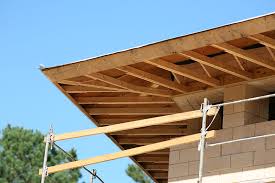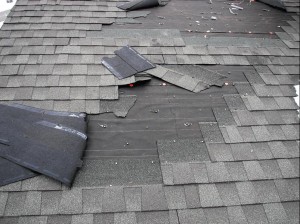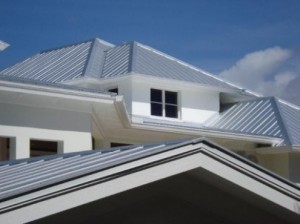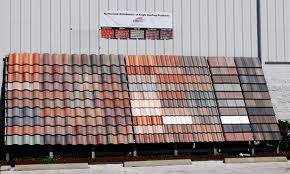Archive for the ‘Roof Materials’ Category
Worlds Largest Vinyl Record on Roof Top

Through the end of January for a publicity stunt, the Inglewood California Forum will have a 407 foot diameter vinyl record on their rooftop. Hotel California by the Eagles is spinning at 17 MPH, actually just the center is spinning. The record will stay up until the end of the month to commemorate the eagles being the first band to perform at the Forum since the renovation. When the month is over, the record will come down and the standard white roof materials will once again be visible.
The Inglewood Forum spent 100 million dollars to renovate the iconic building in Los Angeles. The LP was designed and built by New York Marketing Company Pop2Life. The roof top record required 25 tons of material, 15 LED lights, 1 mile of aluminum framework and over 5 acres of printed vinyl.
The Forum is the country’s largest indoor venue focusing on music and entertainment. The Forum was first opened in 1967 as a home for the Lakers.
Roof Top Record Tiles
On a related note, Jayefull and Matt Glassmeyer are using recycled records and CD’s to tile roof tops of porch overhangs, sheds and other semi enclosed areas. Considerations on which material to use could be that CD’s reflect the heat while the black vinyl records absorb it.
While the material cost is low, performing roof repair on vinyl tiles could be quite a hassle since you can’t nail directly into the CD’s or records due to the brittleness of the materials and they break easily.
Using records may not be a trend for your home, but they are working out fine for people who have used them on their garden sheds and overhangs.
Repairing a Roof with Roofing Cement

If you have limited or minor damage to your roofing system you may be able to use roofing cement as a short term fix for your roof repair. You can apply roofing cement when replacing missing or damaged asphalt shingles to hold them in place, also to reattach buckled shingles and patch cracks or small holes. Put roofing cement over exposed nail heads to prevent water leakage.
Checking your roof materials, around flashings, joints or skylights for cracked or weathered roofing cement, if the seal is bad, the cement should be reapplied.
The wood on your roof is very sensitive to excess moisture, and can create many problems. Examine sheathing, rafters and joist to locate areas where excess moisture is an issue. If the water has caused structural damage you will need to repair or replace these areas.
Use a Moisture Reader to Find Problems
Moisture meters are used to measure the percentage of water in a material. If the meter shows more than 18% moisture content the area will more than likely need to be repaired or replaced. You can find moisture meters for under $20.00 to well over $500.
Roof cement is a multi-purpose adhesive and patching material. Be sure to use gloves when working with roof cement as the chemicals involved are asphalt, refined mineral spirits, plasticizers and non-asbestos reinforced fibers. Different formulas are made for dry or wet surfaces, for roofing purposes be sure the label reads it can be used in wet, cold conditions.
Slate Roofs

Slate is a fine grain metamorphic rock that can be made into roofing tiles that come in a wide variety of sizes, thicknesses and colors. Slate is one most fire resistant roofing material available. Slate accounts for much less waste than asphalt shingles that need to be replaced at 20 years or less.
Slate tiles have 2 lines of breakability, cleavage and grain making it possible to split the stone into thin sheets. Slate tiles are relatively flat and easy to stack while retaining a natural look. Slate roofs can last 150 years or more.
In some parts of the country slate roofs were common and were standard roofing materials. Today slate roofs are expensive and not as easy to come by as simply going to the quarry and picking some up. Technology and cost have made way for cheaper and lighter asphalt shingles.
Earliest recorded Slate Roof
In 1287 in North Wales England is the first recorded slate roof. Slate was very expensive so only the wealthy were using slate for their castles and churches.
In the 1800’s Spain improved the quarrying process and made slate available for the masses. In 1785 the first U.S. quarry opened in Pennsylvania.
After the civil war slate production increased to over 200 quarries on the east coast, starting in Pennsylvania and spreading east. Vermont is still the state with the most slate production with the highest quality stone.
Slate can cost up to 5 times more than asphalt roofing and if your local roofer doesn’t know what they are doing, it can be like having no roof protection at all.
Roof Sheathing

Sheathing is the boards or sheet materials applied on top of roof rafters to form a base on which the shingle or other roofing covering is laid. Sheathing can be made of plywood or solid wood.
Plywood sheathing is used for composition shingles, roll roofing and slate. It can also be used with spaced sheathing if extra strength is needed. Sheathing is covered with tar paper or other water proofing material, and then covered with shingles.
Spaced sheathing is usually made with 1X4’s and is commonly used under wood shingles, wood shakes, tile or metal sheet roofs. Generally nailed directly on to the rafters, spaced sheathing can also be nailed over a plywood deck.
Tongue and Groove for Cathedral Type Roofs
Tongue and groove sheathing is commonly used if the sheathing will be visible from inside the house. Using 2X6 boards tongue and grove is very expensive compared to exterior grade plywood sheets. One 4×12 or 4×8 plywood can be installed in 1 minute. Tongue and groove boards would take half an hour to cover the same area.
Your local roofer can replace damaged sheathing when roofing your house. Cut out the sheathing area just larger than the damaged area. Be careful not to cut into the rafters. Cut new sheathing from exterior grade plywood or the same material as your original sheathing. Nail the patch in place with galvanized nails driven into the rafters at 6 inches intervals.
Most building codes have adopted stricter requirements in hurricane prone regions. To strengthen your roof sheathing you can re-nail it with stronger nails or screw it down to help prevent your roofing materials from blowing away in strong winds.
Recycling Your Roof
 Many homeowners know very little about the roof materials covering their home. When it comes time to replace a roof, most just simply replace with a similar material as before. Very few people actually stop to consider using recycled roof materials or even recycling the old materials that is removed from their home. However, making this simple choice can greatly benefit the environment and your budget for roof repair.
Many homeowners know very little about the roof materials covering their home. When it comes time to replace a roof, most just simply replace with a similar material as before. Very few people actually stop to consider using recycled roof materials or even recycling the old materials that is removed from their home. However, making this simple choice can greatly benefit the environment and your budget for roof repair.
Saving Shingles
The average home in America is covered by a traditional asphalt shingle roof. Known for their affordability and aesthetic appeal these shingles come in just about every color possible. However, it is estimated that 22 billion pounds of the waste deposited into landfills each years are from old asphalt shingles.
Until recently these materials were manufactured new from composite asphalt materials, but with no recycled version available. These days asphalt shingles can be found in a recycled version, saving the homeowner money and sparing the environment. Since the recycling of asphalt shingles, the amount of waste ending up in landfills has been cut by 50%. As more homeowners encourage recycling of their old roof materials and choosing only recycled options for new materials the amount of waste in landfills can continue to drop significantly.
Metal Roof Benefits
 With so many types of roofing materials available, homeowners are often presented with the unique dilemma of too many options. While most people stick with a traditional composite asphalt roof, they may be missing out on some of the benefits other roof materials can offer.
With so many types of roofing materials available, homeowners are often presented with the unique dilemma of too many options. While most people stick with a traditional composite asphalt roof, they may be missing out on some of the benefits other roof materials can offer.
Magnificent Metal
Metal roofs are often chosen because of their durability and unique aesthetic appeal. Whether you choose a beautiful bronze roof material or a simple aluminum, your home will benefit in one or more of these ways:
1. Fire resistant — metal is a powerful protector of your home, especially for homes that are vulnerable to fire. The naturally fire resistant nature of metal roof materials can prevent fires from spreading and reduce the chances for additional threat or damage.
2. Mold/Mildew resistant — unlike other roof materials, metal roofs are naturally resistant to moisture. That means that metal roofs serve well in coastal areas, where problems with mold and mildew often plague traditional roof materials.
3. Energy efficient — metal roofs deflect the sun’s rays in the summer, keeping the home cooler. For improved energy efficiency, white roof coatings can be applied to the metal roof to further reduce the abortion of heat and damaging rays.
4. Easy installation and maintenance — roofers and homeowners both win with a metal roof as it is easy to install and keep clean. Homeowners are far less likely to experience the need for high maintenance costs or experience damage.
Healthy Roof Coating System
 Among many other risks, your roof is susceptible to the threat of pest and pollutants. Pest waste, mold, fungus and other microorganisms can be destructive to the integrity of your roof. Your roof is working to protect your home from toxins and environmental hazards, but what is protecting your roof materials?
Among many other risks, your roof is susceptible to the threat of pest and pollutants. Pest waste, mold, fungus and other microorganisms can be destructive to the integrity of your roof. Your roof is working to protect your home from toxins and environmental hazards, but what is protecting your roof materials?
Roof Coatings
There are many forms of roof coating systems, all working to serve a specific function. White roof coatings are designed to reflect the sun’s rays and prevent heat absorption, thereby lowering the need for traditional energy consumption to balance the internal temperature of the building. As an eco-friendly product, white roof systems have gained popularity in the green roofing industry in recent years.
A new type of roof coating system is available that offers antimicrobial protection of your roof system. The Clear-Shield Rx system is a clear-acrylic, non-toxic coating that prevents bacterial and fungal growth on the surface of your roof. This new technology protects your roof from the damaging effects of such microorganisms, which can lead to corrosion of your roof materials and an increased risk of health hazards inside the home. The Clear-Shield system can be applied to a variety of roofing surfaces and has the potential to improve the quality of the air being drawn into facilities by preventing contaminated growth on roof surfaces.
The Clear-Shield Rx system was developed by The Garland Company Inc, a leader in high-performance roofing solutions.
Summer Savvy Roof Materials
 With temperatures rising, so are the costs of our air conditioning bills. Even if you don’t live in a region battered by high temperatures, chances are your roof is still experiencing damage from the sun’s harmful rays. Here are a few smart roofing choices for battling high heat and lots of sunshine in the summer:
With temperatures rising, so are the costs of our air conditioning bills. Even if you don’t live in a region battered by high temperatures, chances are your roof is still experiencing damage from the sun’s harmful rays. Here are a few smart roofing choices for battling high heat and lots of sunshine in the summer:
Solar panels – the most obvious roof product to save you money this summer is solar roof panels. Harnessing the power of the sun’s energy to power your home is not only cost effective, but environmentally friendly. With the installation of a 20 by 20 foot array of solar panels, the average American home can generate enough electricity to power the home for 24 hours. That is a huge reduction in the cost of traditional power and a huge step towards protecting the environment.
Slate/clay tiles – these roof materials are very popular among the southern regions of the United States for their durability under high temperatures. Slate and clay tiles are made from natural materials found in the earth and are, therefore, also environmentally friendly roof products. These tiles prevent the absorption of heat into the home and keep the home much cooler than would a traditional asphalt roof.
White roof coatings – traditionally used for commercial buildings, white roof coatings are becoming more popular among homeowners. This roof system coats the existing roof material with a lightweight, energy efficient material that reflects up to 85% of the sun’s harmful rays. Reflecting the rays means less heat absorption, which means a reduced need for cooling and energy consumption.
Roof Tile Materials

Roof tiles are designed to keep the elements out and provide an attractive durable roof for your home or business. Traditionally the tiles are made from locally sourced materials like clay or slate.
Clay tiles date back 4 or 5 thousand years to when it was a roofing material in China. Clay roof tiles are widely used throughout southern and southwestern states.
Mineralized steel tile comes in panels and makes for rapid application from roofers. The bituminous coated galvanized steel panels are called Decramastic roof tile, the units are lighter, easier to handle and less expensive than conventional clay tiles.
Man Made Materials
Concrete tiles and concrete fiber reinforced tiles are one of the most durable of all the roofing materials. They are usually sold with warranties running to as much as 50 years. These tiles are fireproof, immune to rotting and termite or rodent damage. They resist weathering of all types and actually grow stronger with age.
Slate tiles have a distinctive look and can be quite expensive. The slate is fireproof and relatively low maintenance. The tiles can be heavy and fragile.
Synthetic roof tiles are made with polymers and rubbers combined with fillers to make them durable, lightweight and weather resistant. Made to look like traditional tiles without the weight they can be installed without reinforcing the roof. Most synthetic roof tiles come with a 50 year warranty.
Types of Roof Shingles

Asphalt strip shingles appearance and style added to the variety of shingle types makes them popular with homeowners and roofers. When first introduced, they were commonly called 3 tab shingles. The 1×3 foot strip had two short ½ inch cut outs at foot intervals giving it three shingle tabs.
The 3 tab shingle is still widely used today for roof materials, but heavier architectural shingles are becoming more popular. New manufacturing methods plus the double layering and use of larger heavier granules has raised the weight of the shingles.
Seal tabs for wind resistance feature incorporates into the shingle a row of adhesive at exact positions. The heat from the sun softens the glue and adheres to the shingle underneath.
Fiberglass Shingles
Fiberglass shingles have a different type of manufacturing process. The new shingles are made of fiberglass mat as a base for the asphalt instead of the organic felt base originally used. The fiberglass is considerably stronger than the felt and less bulky. Fiberglass shingles do not shrink and swell with humidity and moisture so they tend to outlast felt based shingles.
Shingle colors are determined by the tiny ceramic granules that are imbedded in the asphalt. You can also change the texture by double layering, irregular butt lines and two toning the shingle colors.
Asphalt shingles are chosen by their weight class as well as other features. The better quality shingles generally weigh more, and cost more. Asphalt shingles also carry certifications from Underwriters Laboratories stating their fire and wind resistance. A class “A” shingle will be more fire resistant than a class “C”.






